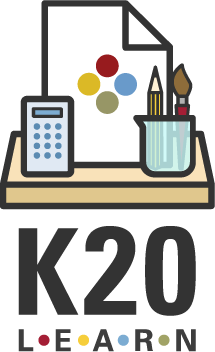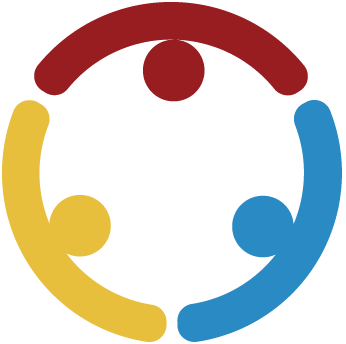Summary
In this lesson, students will identify organizations within the community that help people meet their basic needs. Students will discuss why people help one another and the potential impact of these decisions on society. Next, they will investigate a charitable organization, its founding, its current purpose, and its impact on society. To extend their learning, students will draw their own conclusions about what makes a nonprofit organization worthy of their time and donations. Finally, students will conclude the lesson by reflecting on ways in which they have or intend to contribute to their own communities.
Essential Question(s)
How do charitable organizations benefit the community? Do you have a responsibility to be charitable?
Snapshot
Engage
Students brainstorm and identify what they know about charitable organizations through an image analysis activity.
Explore
Students examine their own beliefs about the responsibility of citizens to help others while learning about how charitable contributions can help communities and individuals.
Explain
Students participate in a discussion activity about what makes a charity worthy of receiving a donation and then investigate a charitable organization of their choosing.
Extend
Students use research tools and skills to create presentations about their chosen charitable organization that will be shared with the rest of the class.
Evaluate
Students complete a short written response to reflect on how they have given back to their community, or how they plan to do so in the future.
Materials
Lesson Slides (attached)
Charity Graphic Organizer (attached; one per student)
Multimedia Presentation Rubric (attached; one per student)
The Power of Giving wakelet (attached)
Painting a Picture handout (attached; one per student)
Engage
15 Minute(s)
Use the attached Lesson Slides to guide the lesson. Begin with slide 3 and read aloud the essential questions: How do charitable organizations benefit the community? Do you have a responsibility to be charitable? Move to slide 4 and read aloud the lesson objectives.
Display slide 5 or list the following five organizations on a projector or whiteboard space:
The American Red Cross
The Salvation Army
The American Cancer Society
Wounded Warrior Project
St. Jude Children's Hospital
Without discussing anything about these organizations, ask the students to discuss as a class what they think these organizations might have in common.
Display slide 6 and pass out a copy of the attached Painting a Picture handout to each student. Have students navigate to The Power of Giving wakelet. Direct each group to review one of the five organizations linked on the wakelet, making sure that each group is looking at a different website. Depending on your class size, you may have some groups that receive the same image.
Review the Painting a Picture instructional strategy with students. Explain to students that they will analyze and reflect on the image their group has been given. Have students individually record any observations and inferences they make about their image.
Once students have completed their Painting a Picture handout, ask them to discuss their observations and conclusions with their group. Then, invite groups to share what they discussed with the rest of the class. Help students become aware of the common themes and conclusions among the organizations.
Transition to slide 7. Facilitate a whole class discussion and ask students the following questions:
How would you define the word “charity?”
What are a few characteristics that you think make up a charity?
Encourage students to connect their conclusions and findings from the organizations to help them understand charity. Through class discussion, create a working definition for the word "charity" or "charitable organization."
Establish with students that these are all charities or charitable organizations. Ask students how citizens like themselves can help these charities.
Explore
15 Minute(s)
Move to slide 8 and explain to students that the federal government allows qualified charitable organizations to have certain tax exemptions and that individuals who contribute to charities can get tax credits as well—this is intended to encourage charitable giving.
Display slide 9 and pose the question shown there: Do we, as citizens, have a responsibility to help people who are in need? Allow students to raise their hands and give their opinions. Try to solicit a variety of opinions.
Transition to slide 10 and play the following video for students:
Move to slide 11 and review the POMS: Point of Most Significance instructional strategy. Ask students to first think about and then share out their response to the following question on their paper:
What part of the video did you find most significant and why?
Explain
25 Minute(s)
Display slide 12. Review the instructions for the Commit and Toss strategy before having students take out a piece of paper or sticky note along with a writing tool. Instruct students to respond to the following prompt on their paper:
Are all nonprofit organizations worthy of our time and gifts?
Once they have written their response, have them crumple up the paper and toss it across the room or into an empty box or trash can. Then, ask students to pick up a crumpled paper that is not their own. Invite a few students to read aloud the responses they picked up. Encourage the class to think about why someone may have answered the way they did. You may repeat this process with students if you wish to keep the conversation going among the class.
Display slide 13 and keep students in small groups of three. Pass out the attached Charity Graphic Organizer to each student. Explain to students that they will be working in their groups to research a variety of different charitable organizations. Use this time to show students a few examples of what types of charities they should be reviewing.
Once students have spent an ample amount of time researching, have groups choose a charity that they feel is worthy of their help or support.
You should evaluate each choice and consider whether or not to approve it. Remind students when they are choosing an organization to keep in mind that they will create a six-slide presentation to present their findings to the class.
Extend
50 Minute(s)
Transition to slide 14 and pass out a copy of the attached Multimedia Presentation Rubric to each group. Explain to students that they will be working with their group to create a presentation with their findings (you can have students use Google Slides, PowerPoint, etc.). Group members should be prepared to present two slides each. Review the presentation requirements on the slide and the rubric with students.
Have each group share their presentation with the class.
Evaluate
10 Minute(s)
Display slide 15 and ask students to take out a piece of paper. Explain the Two-Minute Paper instructional strategy to students and have them respond to the following prompt on the slide:
How have you contributed to your community in the past? In what ways can you help your community in the future?
Begin the two-minute timer and allow students to individually respond to the prompt. Collect completed student responses.
The Two-Minute Paper and the presentations can serve as assessments for this lesson.
Resources
K20 Center. (n.d.). 3-2-1. Strategies. https://learn.k20center.ou.edu/strategy/117
K20 Center. (n.d.). Card sort. Strategies. https://learn.k20center.ou.edu/strategy/147
K20 Center. (n.d.). Google classroom. Tech Tools. https://learn.k20center.ou.edu/tech-tool/628
K20 Center. (n.d.). Poll everywhere. Tech Tools. https://learn.k20center.ou.edu/tech-tool/662
K20 Center. (n.d.). Two-minute paper. Strategies. https://learn.k20center.ou.edu/strategy/152
K20 Center. (n.d.). 2-Minute timer. YouTube. https://www.youtube.com/watch?v=HcEEAnwOt2c&t=7s
(n.d.). Learning to Give. Learningtogive.org. https://www.learningtogive.org/
Oklahoma City. OK Nonprofits and Charities. GreatNonprofits. https://greatnonprofits.org/city/oklahoma-city/OK


